Quick Summary
Your signature is more than just ink on paper; it’s a reflection of your personal brand and professional identity. In this guide, you’ll find 11 creative signature ideas across four unique style categories to help you design a signature that feels authentic and looks polished. For more e-signature tips and inspiration, check out our blog.
Struggling to Create a Signature That Feels Like You?
A signature says a lot about you; it’s often the first impression you leave on contracts, applications, and official documents.
But finding a style that feels natural, looks professional, and reflects your personality isn’t always easy. Many people either rush through the process or settle for a signature that doesn’t quite reflect who they are today.
In this SignWell article, we’ll share 11 creative signature ideas to help you design a signature that stands out, aligns with your personal brand, and looks great across both paper and digital documents.
Why Listen to Us?
At SignWell, we’ve helped over 65,000 businesses design and manage signatures that meet the highest professional standard. Our platform supports millions of signatures across both digital and traditional document workflows. This experience enables us to share insights on various signature ideas to inspire you in creating a signature that is both professional and valid.
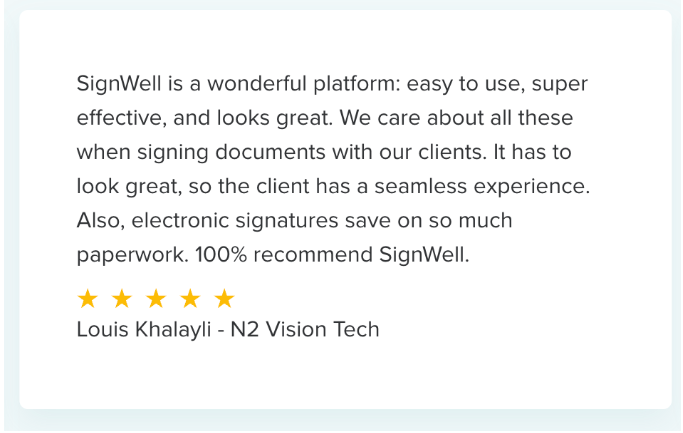
What Makes a Great Signature?
A great signature balances uniqueness with legibility, making it easy to recognize while still looking polished and professional. It should feel natural to sign, something you can recreate consistently in just a few seconds without overthinking.
Your signature also says a lot about your professional presence. It should convey confidence and credibility across every setting, from quick email sign-offs to formal contracts, while still reflecting your personal style and the expectations of your industry.
Types of Signatures
We all sign documents, but not every signature works the same way. Some carry legal weight, others are about branding, and a few are simply there to make life easier online.
Here’s a quick look at the four most common types and when to use each.
1. Wet Signatures
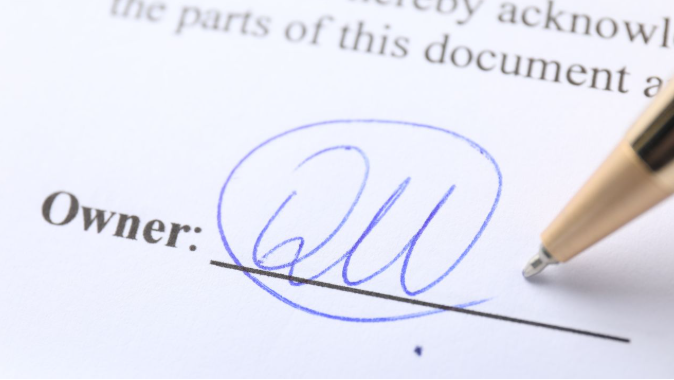
A wet signature is created by hand, using a pen on paper. It’s the most traditional form of signing and is often required for certain legal, financial, or notarized documents. While highly authentic, wet signatures can be slow to manage, especially if you’re working remotely or need to sign documents frequently. Learn more about wet signatures in this guide.
2. Electronic Signatures (E-Signatures)
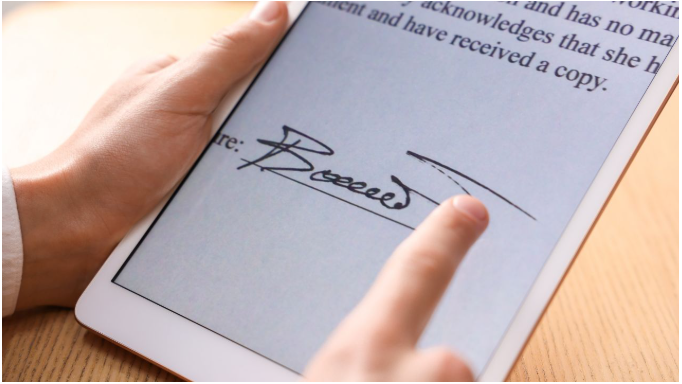
An electronic signature is any digital action that shows your intent to sign, like typing your name, checking a box, or uploading a scanned image of your handwritten signature. E-signatures are legally valid under the ESIGN Act and eIDAS, making them perfect for everyday business documents and faster approvals.
For more insights, read our guide on How to Create an Electronic Signature.
3. Digital Signatures
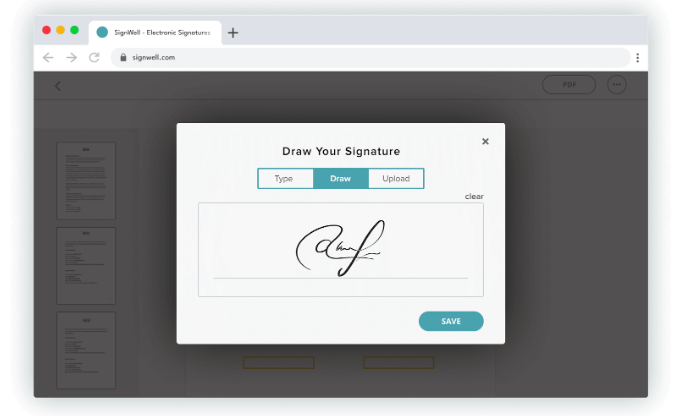
A digital signature is a type of online signature that uses encryption and digital certificates to verify the signer’s identity and ensure the document hasn’t been altered. It’s the most secure and legally robust option, often required in regulated industries like finance, healthcare, and legal services. Read our guide on Digital Signatures validation for more information on validating digital signatures.
4. Email Signatures
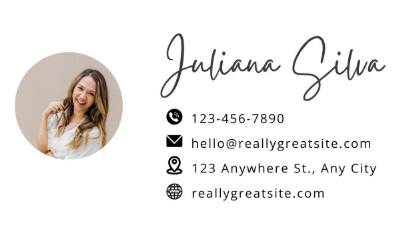
An email signature isn’t legally binding; it’s a branding tool. Found at the end of your emails, it usually includes your name, title, and contact details. A clean, well-designed email signature helps you look professional and build credibility.
4. Clickwrap Signatures
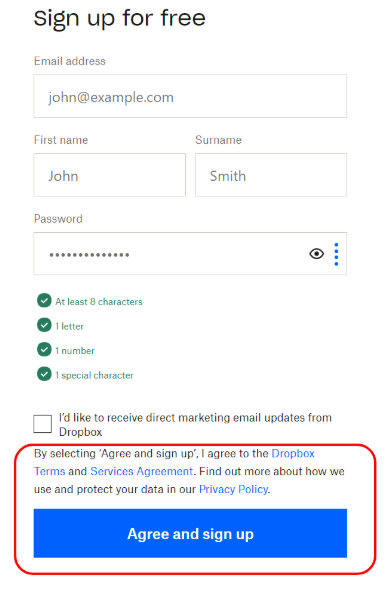
You’ve likely seen these before, when you click “I Agree” or check a box to accept terms on a website or app. That’s known as a clickwrap signature (or clickwrap agreement). It’s a form of electronic signature where your click or checkbox selection indicates consent to the stated terms and conditions. Learn more about Clickwrap Agreements in this detailed guide.
5. Biometric Signatures
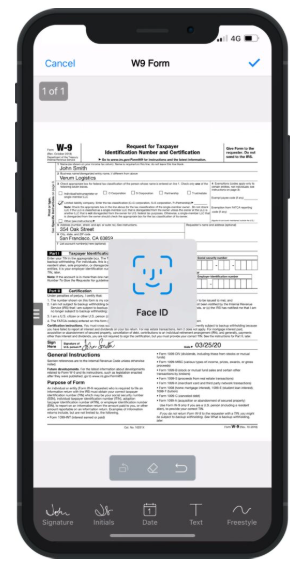
A biometric signature uses your unique biological traits, like fingerprints, facial recognition, or handwriting dynamics, to verify your identity and confirm intent when signing a document electronically.
11 Signature Ideas by Style Category
Initials and Single Name Signatures
1. The Flourish Signature
Inspired by Pablo Picasso’s iconic signature, this style uses a single name enhanced with bold, graphic elements to express creativity, confidence, and individuality. The addition of a simple underline or flourish reinforces strength and character, making it ideal for professionals or creatives building a personal brand around their name.
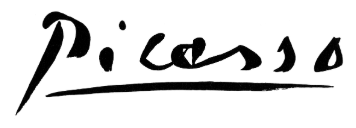
To create your own, stylize your chosen name with smooth letter connections and subtle size variations to highlight key letters. Add a clean flourish or underline that complements, not overpowers, the design.
2. The Quirky Initials Signature
Inspired by Steve Wozniak’s playful signature, this style uses stylized initials to balance efficiency and personality. It also includes subtle loops and a gentle upward slant, conveying a positive attitude. It’s perfect for professionals who sign frequently and need a quick yet distinctive mark.
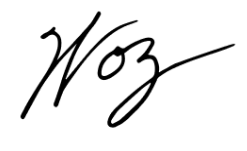
To create this look, enlarge your initials, add light curves or loops for character, and tilt slightly upward to project optimism. Keep it simple and consistent, so your signature is easy to reproduce across all signing contexts.
3. The Monogram Signature
Modern monogram signatures combine classic initial-based design with a minimalist aesthetic. This style works well for professionals in creative fields, consulting, or personal branding who want to project sophistication with a clean, approachable touch.
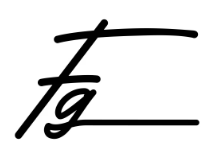
To create yours, intertwine your initials in a visually balanced way, using simple geometric shapes and clean lines. Keep proportions consistent and avoid overcomplicating the design. Your goal is to create a recognizable, polished signature that feels personal yet effortless to reproduce.
Emphasized First Letter Signatures
4. The Mixed Signature
Inspired by Richard Branson, this style combines clear, bold initials with a freer, less legible flow for the rest of the name. It projects executive presence and confidence while adding a layer of uniqueness and security, making it harder to forge.
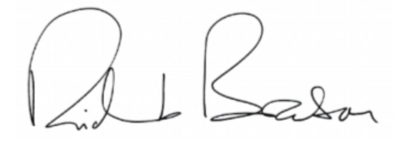
To create your own, make your first and last initials larger and more defined, then let the remaining letters flow naturally without over-focusing on clarity. This balance of structured initials and relaxed script creates visual interest and ensures your signature is recognizable, even when signed quickly.
5. The Stylized Signature
Modeled after Barack Obama’s signature, this style highlights key initials, often with larger, more refined lettering, to convey authority, balance, and calm confidence. The clean, steady baseline and open letter spacing reflect clarity and approachability, making it ideal for leaders and public-facing professionals.

To design yours, enlarge your main initials, add subtle stylization for visual interest, and align the rest of your texts horizontally.
Clear and Readable Signatures
6. The Legible Signature
Inspired by John Hancock’s bold signature on the U.S. Declaration of Independence, this style proves that clarity can command attention. Each letter is written with confidence and generous spacing, creating a signature that feels authoritative, decisive, and professional.
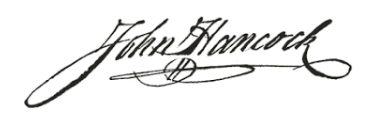
To create your own, write each letter of your name in clean cursive, keeping the heights consistent and the strokes bold. Maintain a strong contrast between thick and thin lines, and avoid excessive flourishes. The goal is to create a signature that stays clear and readable, even when resized for digital use.
7. The Block Signature
Modeled after Bill Gates’ straightforward signature, this style uses strong, balanced linework and clear separation between first and last names to convey confidence and independence. It favors a clean, professional look over artistic flair, making it a perfect fit for corporate settings and formal business documents.

To create your own, focus on even letter spacing and steady horizontal and vertical strokes. Skip decorative curves and keep the structure simple. This creates a signature that looks intentional and easy to reproduce across both paper and digital formats.
8. The Print Signature
This style emphasizes balance and structure, using clear, evenly spaced letters aligned along a straight baseline. This creates a signature that feels methodical and precise, perfect for professionals who value accuracy and attention to detail.
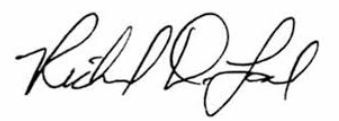
To create this style, keep your letter heights consistent, maintain uniform spacing, and follow a steady baseline. This structured approach works especially well in fields like accounting, engineering, law, and other professions where clarity and reliability help build trust.
Creative and Unique Signatures
9. The Underlined Classic Signature
An underline adds instant professional appeal and is often seen as a mark of decisiveness and confidence. This timeless flourish gives your signature a sense of finality and authority, making it a favorite among professionals who want to project clarity and completion in their business dealings.
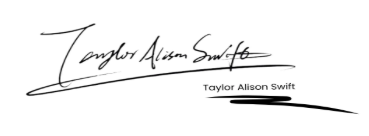
To create this style, sign your name as usual, then add a steady horizontal line that extends just beyond your signature. Keep the line clean and balanced, avoid heavy curves or excessive decoration so the underline enhances, rather than distracts from, your name.
10. The Ascending Signature
An upward slant gives your signature a sense of momentum and positivity, projecting enthusiasm and a forward-thinking mindset. This style works especially well in sales, consulting, and leadership roles.
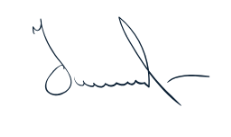
To create this signature, maintain a gentle upward angle (around 10–15 degrees) across your name, keeping each letter aligned for a cohesive look. Let the slant feel natural, not forced, to convey genuine confidence.
11. The Simplified Signature
Modern minimalist signatures focus on clarity and restraint, and remove unnecessary details while keeping your personal character intact. The results in a signature that feels clean and intentional, ideal for professionals in technology, design, and consulting.
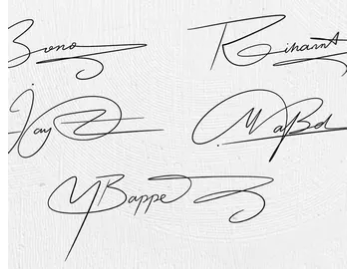
To create this signature style, emphasize essential letter forms, use consistent line weight, and skip decorative flourishes. Aim for maximum impact with minimal detail to create a signature that looks effortless yet distinctive.
How to Create Your Own Signature
Designing your own signature can feel surprisingly conflicting because of the different types of signatures. Should it be cursive, print, or a mix of both? Do you keep it formal and precise, or let it be expressive and free-flowing?
There’s no one-size-fits-all approach, but here are some steps to help;
- Reflect on your personality and profession. Think about how you want others to perceive you: serious, approachable, confident, or artistic.
- A bold, sweeping style may suit creatives or public figures.
- A clean, precise style may work better for professionals in law, finance, or tech.
- Study your natural handwriting
- Do you lean toward cursive or print?
- Are your strokes large and dramatic, or neat and restrained?
- Building from your natural tendencies makes your signature feel authentic, not forced.
- Play with your name’s unique features
- Letters like J, G, Y, or Q can be extended into creative flourishes.
- Repeated letters (e.g., Sally Smith) can be styled differently for variation.
- If your name is long, experiment with abbreviations, initials, or streamlined versions.
- Focus on distinctiveness, not perfection
- Don’t try to include every letter exactly; highlight the strongest, most recognizable parts.
- Prioritize shapes, loops, or angles that make your signature uniquely yours.
- Practice for confidence and speed
- Aim for a signature you can execute in 3–5 seconds without hesitation.
- Test it on different surfaces (paper, receipts, digital pads) and with various pens.
- Remember: natural variations add authenticity and make it harder to forge.
If you prefer digital signatures, tools like SignWell let you test and save versions of your signature so you can use it consistently online.
Your signature doesn’t need to be flawless; it needs to be yours. Once you stop chasing perfection and focus on personality, function, and repetition, it’s easy to create your ideal signature.
Best Practices for Creating Your Signature
- Stay Consistent: Keep your signature recognizable across all documents, allowing only minor natural variations when signing under different conditions.
- Size Smartly: Adjust the size to fit each document, large enough to be legible on small forms but not overwhelming on standard signature lines.
- Ensure Legal Validity: Use a design you can reproduce consistently and authenticate for official contracts and legal documents.
- Keep It Professional: Avoid informal symbols or decorative elements (like hearts or stars) that might detract from a polished, credible appearance.
- Test Across Platforms: Make sure your signature looks clear and professional on digital documents, printed materials, and mobile devices.
Create and Refine Your Perfect Signature with SignWell
Your signature is a reflection of your identity, professionalism, and personal brand. Whether you prefer a bold flourish or a simple modern style, the right signature helps you make a strong impression across every document you sign.
With SignWell, you can design, save, and use your signature seamlessly across all your business documents. Our platform ensures every signature looks consistent and is legally valid, all while making your signing process faster, easier, and more secure.
Bring your new signature to life. Try SignWell for free today.
Get documents signed in minutes.
Simple, secure, affordable e-signatures
by  .
.
Get Started Today
businesses served
customer support satisfaction
documents signed